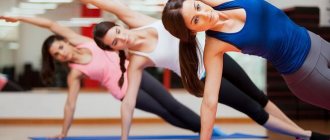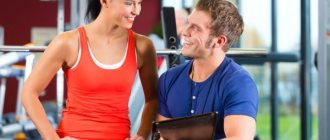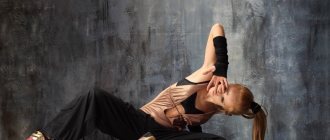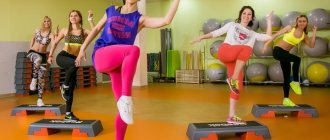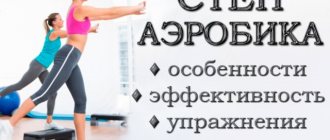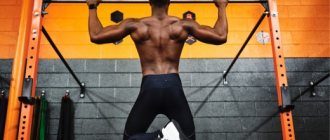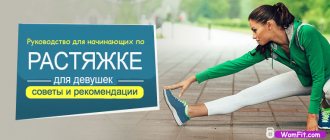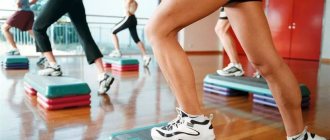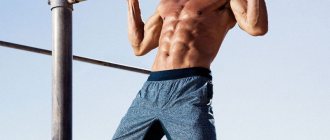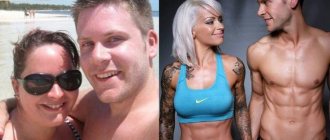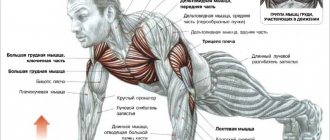Many famous doctors were seriously ill in childhood. For this reason, they decided to create an effective treatment method and help others. So Callan Pinkney developed a whole direction of fitness called “callanetics”.
All famous people have invented something useful thanks to life's suffering and their experiences. Musicians and artists have written great works influenced by the events they experienced. This is how callanetics was invented. Do you want to know what it is and how it helps? Read our detailed review.
What is callanetics
Callanetics is a system of static exercises based on holding certain positions. This mode of operation is effective for developing flexibility and is useful in combating ailments.
What are the benefits of callanetics?
The author of callanetics, Callan, was different from her peers from birth. Curvature of the spine, pelvic distortion, chronic bending of the knee joints - and all this is congenital.
Orthoses became companions of her life. Pinkney's situation became increasingly worse after working in places where she was forced to do physical labor. Having lost her already not the best health, Callan began to look for ways and methods to strengthen the body and relieve pain.
As a result, she created callanetics - a direction for solving problems of the musculoskeletal system. Performing exercises very slowly and smoothly eliminates the possibility of injury. What is the advantage over strength training?
Callanetics as a means of losing weight
Callanetics is a system of exercises consisting of 29 static poses. This direction is formed on the basis of yoga asanas. When holding the body in a certain position, all muscle groups are under tension.
However, this mode of operation does not contribute to significant calorie expenditure. In this regard, the question arises: how will callanetics help you lose weight?
The thing is that with regular exercise, metabolism accelerates, muscles become toned, and the oxidation of free fats is activated. A pleasant bonus will be a reduction in back pain, improved flexibility and posture.
How many times a week do you attend classes?
The recommended “dose” of physical activity is 3 times a week. This regime is most optimal for maintaining the body in tone and obtaining a positive effect. Having no experience in this type of training, we recommend starting with 2 weekly workouts.
In the modern world, every hour is written down in a diary, and we find the opportunity to visit the gym, at best, only once a week. If you have the same busy schedule, don’t worry – there is always a way out! Even with rare but systematic attendance there will be results. 4 workouts a month is much better than none!
Don't chase results! The most important thing is regularity of classes. Remember: any physical activity has a direct impact on the body. Whether it will be positive or negative depends solely on your conscious approach to training.
What do they have in common?
Both techniques were developed to promote health and improve physical strength. They are great for training at home and do not require special equipment or clothing, just wear something that is comfortable and does not restrict movement. There is also no need for shoes.
The rules for performing the exercises are simple and you can master them yourself. The risk of injury is minimized due to the absence of sudden movements. Thanks to training, you can strengthen muscles, but not build them, develop endurance and flexibility. Both systems include some elements from yoga.
Contraindications
You can list an endless number of positive consequences from practicing callanetics. But, like any other type of physical activity, this area of fitness has a number of contraindications.
During “statics”, when holding certain positions, the muscles of the body are tense and compress the blood vessels. As a result, blood supply decreases.
After stopping work, all metabolic products are sharply released into the blood, and breathing increases. Due to this feature of static voltage, callanetics classes are prohibited when:
- deviations from the cardiovascular system;
- varicose veins;
- diseases of the organs of vision;
- spinal instability;
- diseases of the respiratory system, kidneys in the acute stage;
- injuries of the musculoskeletal system.
It is also necessary for persons to refrain from training during the postoperative period. During pregnancy and after childbirth, you should consult your doctor before exercising.
If you have just decided to take up callanetics, then start small: less repetitions, more rest. Listen to your body, be in harmony with it, and it will reciprocate.
Callanetics for beginners: before and after
Callanetics for beginners: before and after
The good thing about callanetics for beginners is that you don’t need to purchase a gym membership, but you can practice at home without special equipment. You don’t even need a sports uniform, you can wear anything, the main thing is that you feel comfortable doing the exercises.
Callan Pinkney has created a set of exercises that helps work all the muscles in problem areas. After all, if some muscles remain unused, then the hated fat appears in this place. This is why callanetics is so effective for those people who want to lose weight. Look at the photos of women who practice callanetics - before and after:
Callanetics for beginners
Callanetics for beginners: before and after photos
Callanetics for beginners: before and results after
Callanetics: before and after
These photos can serve as excellent motivation for you to start doing the training complex today. But check with your doctor first. After all, any physical activity has contraindications.
Bodyflex, Pilates and callanetics - which is better?
Before examining these three areas, answer the question: “Which car brand is the best?” Right! Any! Everyone will name the model that they purchased themselves or that they dream of. There is no single correct answer to questions of this kind. After all, the Russian “automotive industry” may also have an advantage.
It all depends on the purpose for which the car is purchased and what parameters are important to the buyer. The same can be said about fitness trends. It cannot be said that any of them is the most effective. Each body is individual: focus on the sensations and reactions of the body after exercise.
To make you understand the differences between the three presented directions, we will tell you about each in more detail.
Bodyflex is a training system that is a technique for proper breathing during exercise. The author notes: this scheme is an excellent assistant in the fight against excess weight.
During breathing, due to the balance of oxygen and carbon dioxide, pressure increases, and chemical reactions occur that contribute to the launch of fat burning processes.
Pilates is a system of exercises aimed at improving the flexibility and mobility of the body, developing the abdominal muscles, which the author calls the “frame of strength.” The list of contraindications for Pilates is small, so this direction is safer than callanetics.
Callanetics - as noted earlier, is a set of static exercises aimed at strengthening and stretching the body. There is no emphasis on breathing in this system.
As the author points out: it is important to maintain the even and calm breathing that accompanies you throughout life. During statics, a large number of muscle groups are involved in the work. Therefore, it will be difficult for a beginner in the first lessons. To move on to full-fledged training, you need to attend about 30 preparatory trips to the gym.
It would seem that there are three identical directions, but each has its own distinctive feature. Choose what is closest to you and practice. We advise you to attend all three classes and make a choice based on your feelings!
Callanetics and Pilates: what are the differences and similarities
Differences:
- Callanetics is suitable for those who have good physical fitness. Beginners are better off paying attention to the second direction, as they may simply not be able to withstand such a load.
- Unlike the first system, Pilates perfectly works the respiratory system and is absolutely safe for people of any age and training.
We also recommend that you read: “Pilates on a reformer – advantages and benefits.”
These are the main features that help you understand the difference between Pilates and callanetics. However, there are also similarities between them.
Both complexes:
- improve physical health;
- are not cardio training, that is, the heart rate does not increase. This means that those who have cardiovascular diseases will also be able to exercise;
- performed without sudden movements and jumps;
- improve flexibility, strength and endurance;
- strengthen muscle mass, rather than increase it.
Callanetics exercises for training at home
If you are unable to attend classes at fitness clubs, start practicing on your own. Gradually incorporate these exercises into your workout. When it becomes too easy and you want to grow in skill, sign up for individual lessons with a trainer. He will give you advice and further recommendations.
lessons with a trainer. He will give you advice and further recommendations.
Abdominal muscles
- Crunches
Twisting (crunches)
Lie on your back, bend your legs at the knee joints and place your feet hip-width apart. Lift your shoulder blades off the floor, lift your head, and stretch your arms between your thighs. Lock in this position for 15-20 seconds. Rest for 10 seconds. Repeat 10 times.
- Single leg twist
Lie on your back, bend one leg at the knee joint, lift the other at an angle of 90°. Keep your leg as straight as possible. Lift your shoulder blades off the floor, raise your head, and extend your arms near your raised leg. Lock in this position for 15-20 seconds. Rest for 10 seconds. Repeat 10 times.
- Twisting to straight legs
Torso twisting (hands to toes)
Lie on your back, raise your legs as straight as possible at an angle of 90°. Lift your shoulder blades off the floor, raise your head, stretch your arms across your legs. Lock in this position for 15-20 seconds. Rest for 10 seconds. Repeat 10 times.
- Corner sitting
Sit on the floor and place your hands behind you. Raise your legs as high as possible, spread them apart and lock in this position for 5-10 seconds. Then bring your legs together and lower them to a height of 15cm from the floor. Dilute again and hold for 5-10 seconds. Rest for 10-15 seconds and continue again.
- Diagonal strip
Take a palm-knee position. Simultaneously extend your arm and opposite leg until they are parallel to the floor. Hold this position for 10-15 seconds. Rest for 5-10 seconds. And repeat the same on the other side. When lifting, tuck your pelvis down and contract your abs as much as possible.
Leg muscles
- Plie squat
Stand against the back of a chair or other stable object. Holding the support with your hands, stand on your toes with your heels facing each other.
With a straight back, sit down 20-30 cm and fixate at the lowest point for 15-20 seconds. Stand up, rest for 10 seconds and repeat 10 times.
- Gluteal Bridge
Gluteal Bridge
Lie on your back, bend your knees, place your feet hip-width apart. Raise your pelvis as high as possible and tighten your gluteal muscles. Hold this position for 15-20 seconds. Repeat 10-15 times after 10 seconds of rest.
- Squeezing the ball
Sit on the mat and lean on your forearms. Place the ball between your knees. Squeeze your legs as hard as possible, trying to crush the ball. Hold this position for 15-20 seconds. After 10 seconds of rest, repeat several more times.
- Seated leg abduction
Lie on your side and lean on one arm. Bend your upper leg at the knee joint and place it in front of you. Raise your tense lower leg and hold for 15-20 seconds. Rest for 10 seconds, turn over and do the same on the other leg.
Muscles of the back and arms
- Spring
Take a half-squat position and bend forward with your arms outstretched. Stay in this position for 10-15 seconds. Then, without changing the position of the body, move your arms straight back. Fix again for 10-15 seconds. Rest for 10 seconds and repeat again.
- Reduction of the shoulder blades
Take a standing position with your arms extended to the sides. Bring your arms behind your back as far as possible, tensing the muscles in the shoulder blades as much as possible. Hold for 10-15 seconds. Return your hands to the starting position for 10 seconds and repeat again.
- Swimmer
Lie on your stomach, take a boat position (lift your arms and legs off the floor as much as possible). Raise your arm and leg diagonally for 5-10 seconds, then do the same on the other side. Rest for 10 seconds and repeat again.
- Push-ups
High support push-ups with mid-arm position
Take a lying position on any elevation. Bend your elbows along your body. Fix at the lowest point for 5-10 seconds. Then return to the starting position. Rest for 10 seconds and repeat several times.
- Clenching hands in front of chest
In a standing position, bring your palms together in front of your chest. Squeeze your hands with maximum effort for 10-15 seconds. Rest for 5 seconds and repeat 10 times.
Stretching exercises
Hold each position for 10-20 seconds, maintaining a slight feeling of tension. Can be repeated several times. Perform each exercise smoothly, without jerking.
Neck muscles
Stretch the neck muscles to the sides
Tilt your head and place your hand on the opposite ear. Press lightly with your hand, the other hand is lowered along the body and reaches down with your fingers. Then repeat on the other side.
Shoulder muscles
Delt stretching
Extend your arm straight in front of your chest, lower your shoulder down. Use your other hand to press down on your elbow. Then switch hands.
Chest muscles
Stretching the pectoral muscles by moving the elbows back
Place your palms on your lower back, fingers down. In this position, move your shoulders back as much as possible and pull your chest forward.
- Side bends
Place your feet slightly wider than your shoulders and place your hands on your waist. Bend to one side and reach with the opposite arm in the direction of the tilt. Make sure that when bending, the body does not deviate from the line of the pelvis.
Back muscles
Stretching the groin and back muscles while sitting
Sit on the floor in the butterfly position. Cross your hands and place them on the back of your head. Bend over, rounding your back as much as possible.
Abdominal muscles
Lie on your stomach, place your feet on the back of your feet, and place your palms below chest level. Push yourself up by straightening your arms. Tighten your gluteal muscles as much as possible and try to bend as far back as possible. Do not lift your pelvis off the floor.
Inner thigh
Lie on your stomach, bend your elbows and place your forearms on the floor. Spread your knees as far as possible and bend them at an angle of 90°. Try to push your pelvis as low as possible.
Outer thigh
Stand with your side to the wall and rest your hand on it. Place the leg closest to the wall behind the other and straighten it, resting on the outer side of the foot. Bend the far leg at the knee joint. Try to push your straight leg as low as possible.
Gluteal muscles
Stretching the gluteal muscles while sitting
Sit on the floor, legs straight, rest your hands behind you. Bend one leg at the knee and place your foot on the thigh of the other leg. Bend your straight leg at the knee joint, pulling your foot towards you until you feel a stretch in the gluteal muscle.
Posterior thigh
Forward Bend Hamstring Stretch
From a standing position, lean forward with a straight back until the hamstrings are stretched. Do not bend your legs at the knee joints.
Anterior thigh
Quadriceps stretch on all fours
Take a knee-palm pose. Raise one leg up without straightening the knee joint. With your hand of the same name, grab your foot and pull your leg towards you as much as possible.
Calf muscles
Stretch your calf muscles with your palms against the wall
Step into a lunge position with your back heel off the floor. Hold yourself against the wall with your hands. Make movements to bring your heel as close to the floor as possible.
Reviews and impressions
This is only 1% of the positive feedback from callanetics that can be heard. Try it and share your impressions.
.
FITNESS EXPERT Margarita Sorokina: You can sign up for online training with me, get a training plan or sign up for full support - through the TrainWith.Pro service
